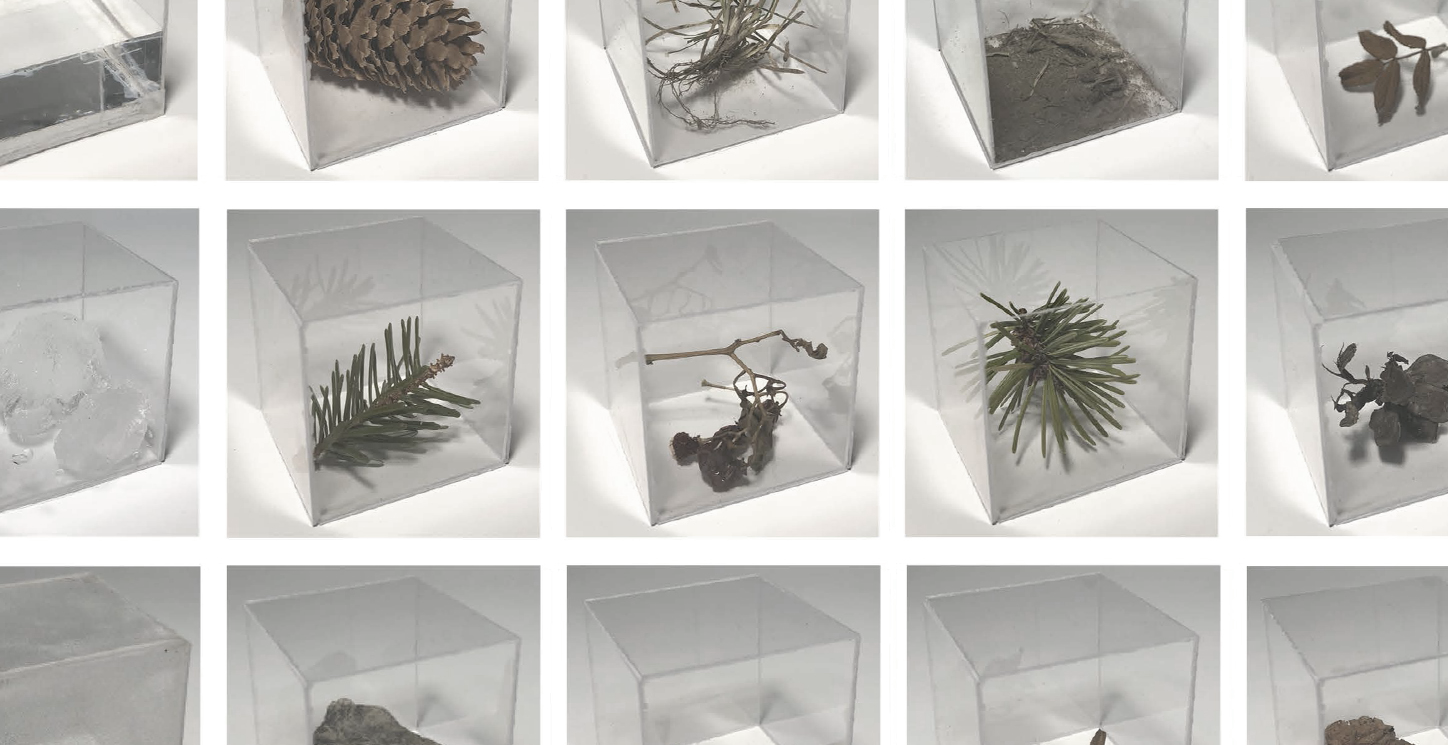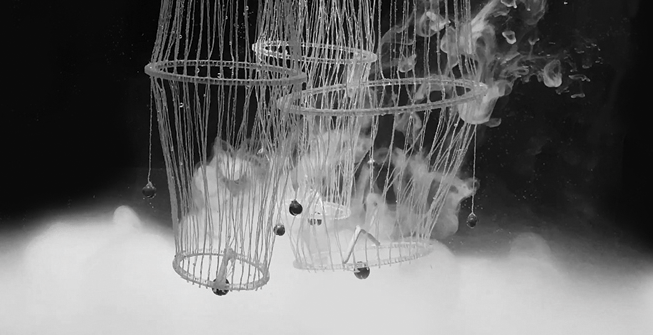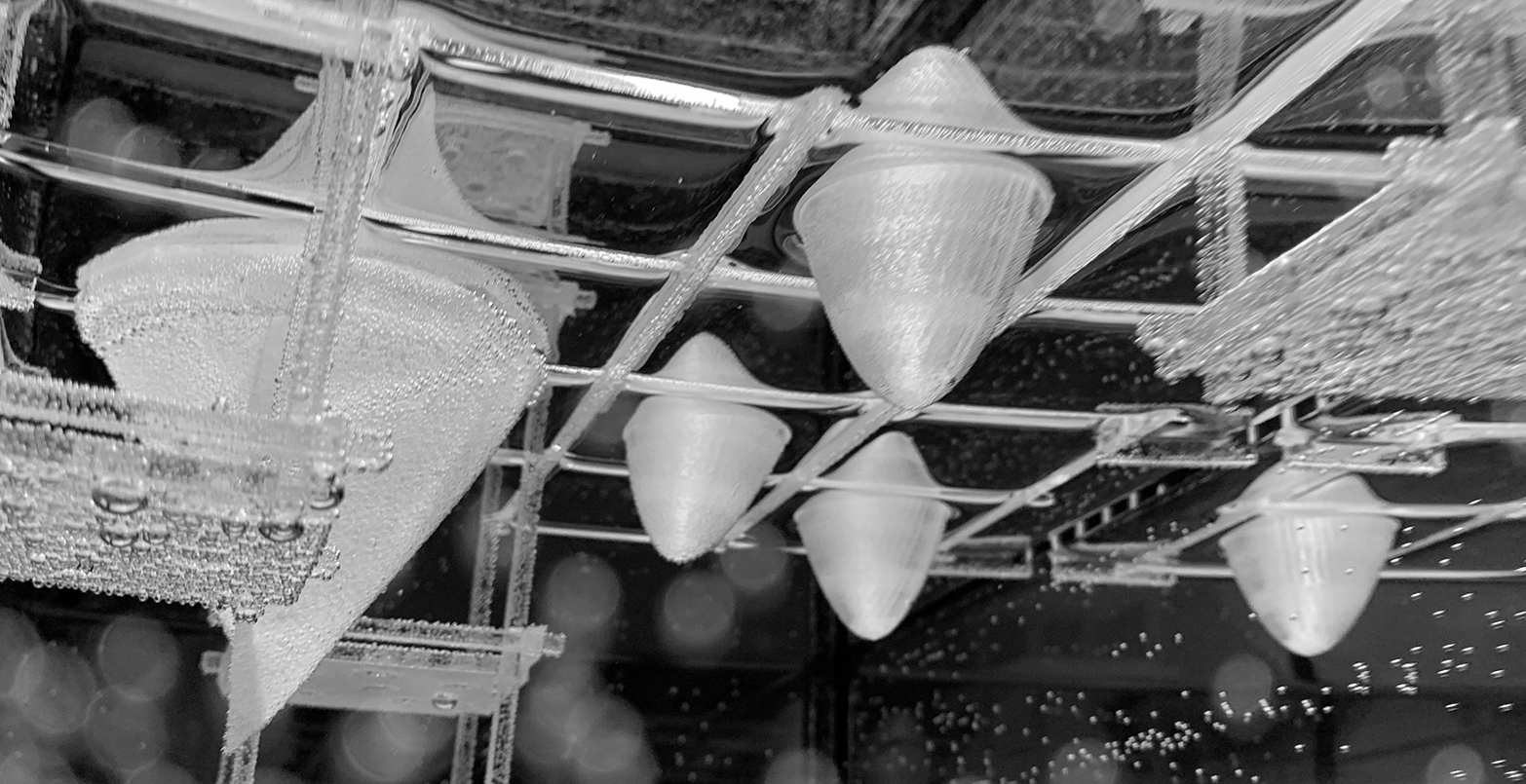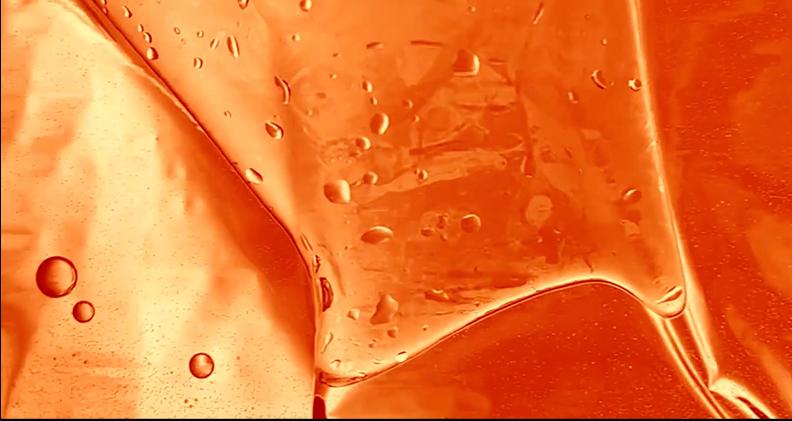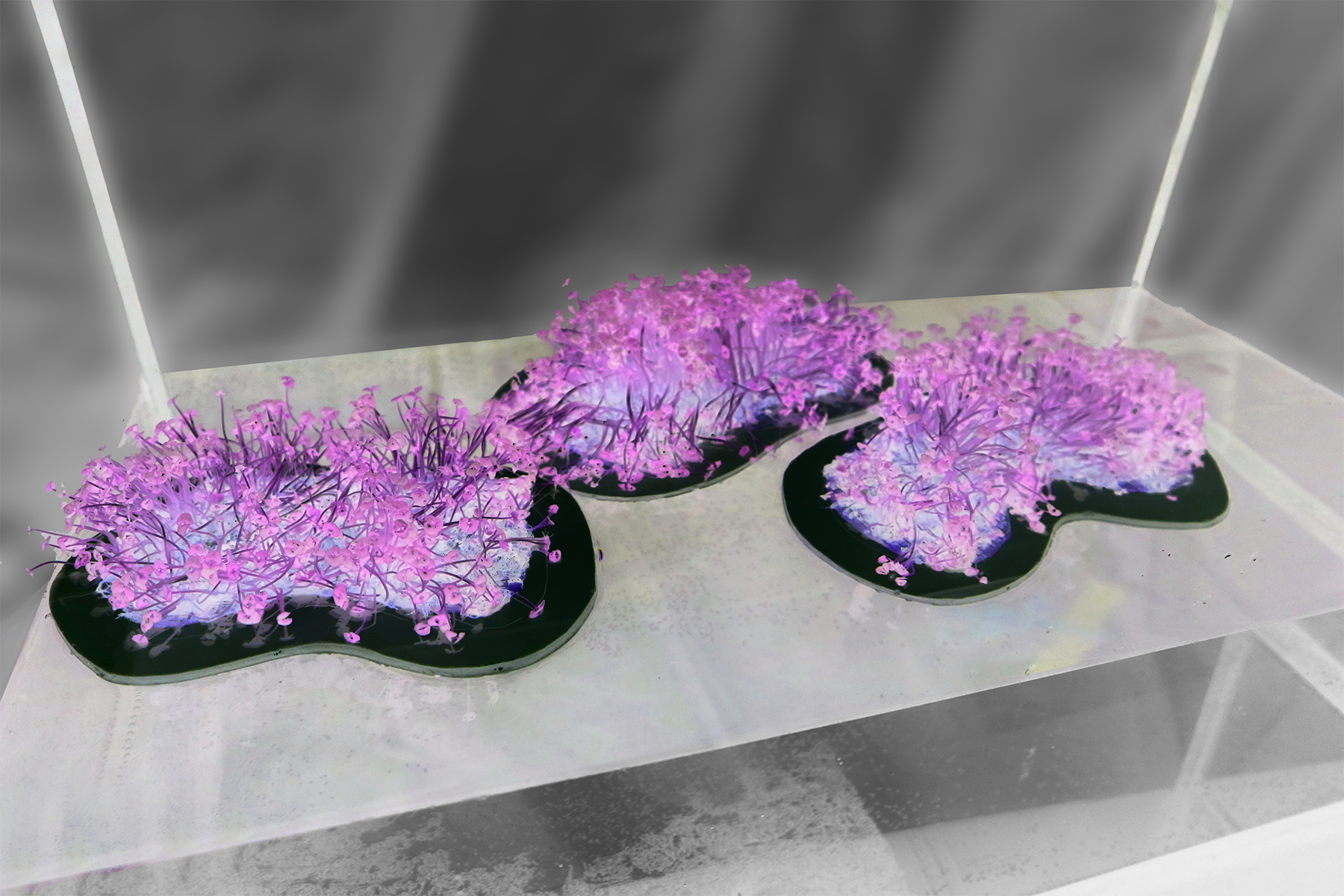Dana Adamus
Tank Worlds : Hamilton Harbour
Shifting Devices
Contamination in Hamilton Harbour is distributed unevenly, a function of water movement, air flow, bathymetry, and outlet sources. This intervention incorporates a series of designed landscape devices that enable remediation that varies in response to local conditions within the harbour. The designs make visible both the extents of contamination as well as their movement over time, as they shift around the harbour. The first device is an intracately netted artificial ecology which enables the cultivation of submerged aquatic plants that purify the water. The net is a host on which plants will grow and eventually make their way onto the lake floor, where they will aid in controlling sediment movement. In the meantime, a series of vertical fins acts as a supporting infrastructure the nets are secured to. This structure dampens water motion, preventing the re-suspension of contamination in the water column. The third device is a field of indicator buoys, which aid in monitoring the site conditions and the extent of their contamination. In parallel, monitoring towers are put in place around the more sheltered industrial areas. The towers help measure contamination levels in the extremely polluted zones so that the bioremediation strategy can eventually be integrated. Finally, a series of decked viewing platforms interface with the network of trails that surround the water, and extend into it. The platforms visibly respond to their windy or turbulent sites. The devices are temporary dissolving, or relocating. The Harbour is left with platforms and towers, spots of eventual recreation.


Site plan - final intervention stage

Sheltered


Mapping - factors of water motion and contamination

Windy


Turbulent




